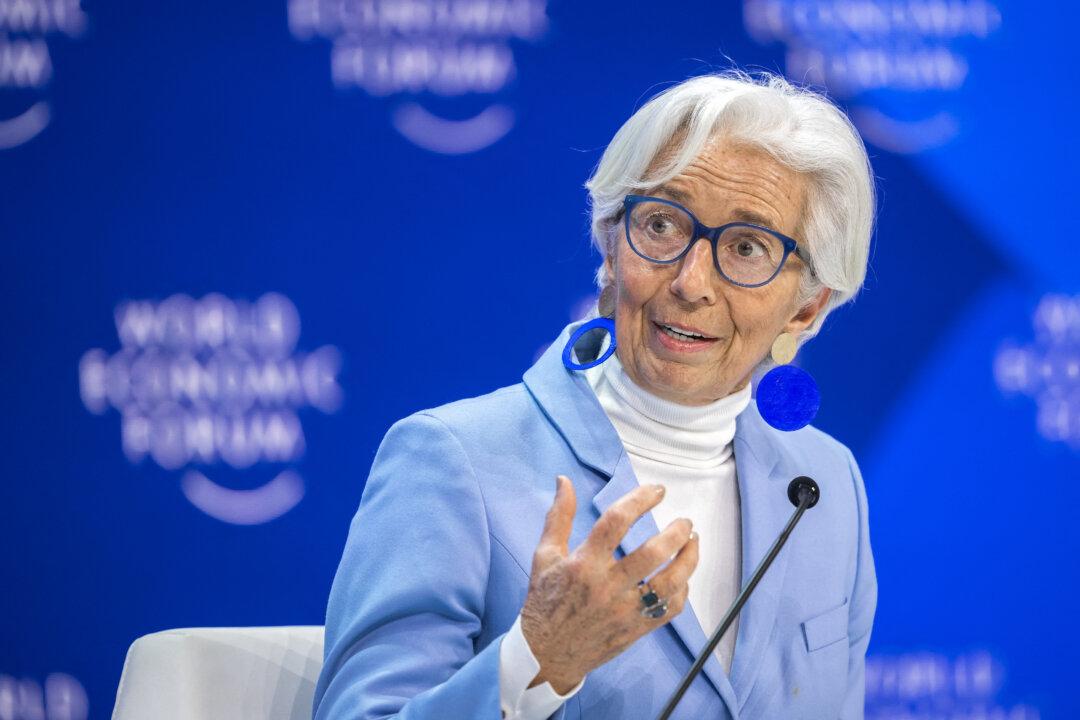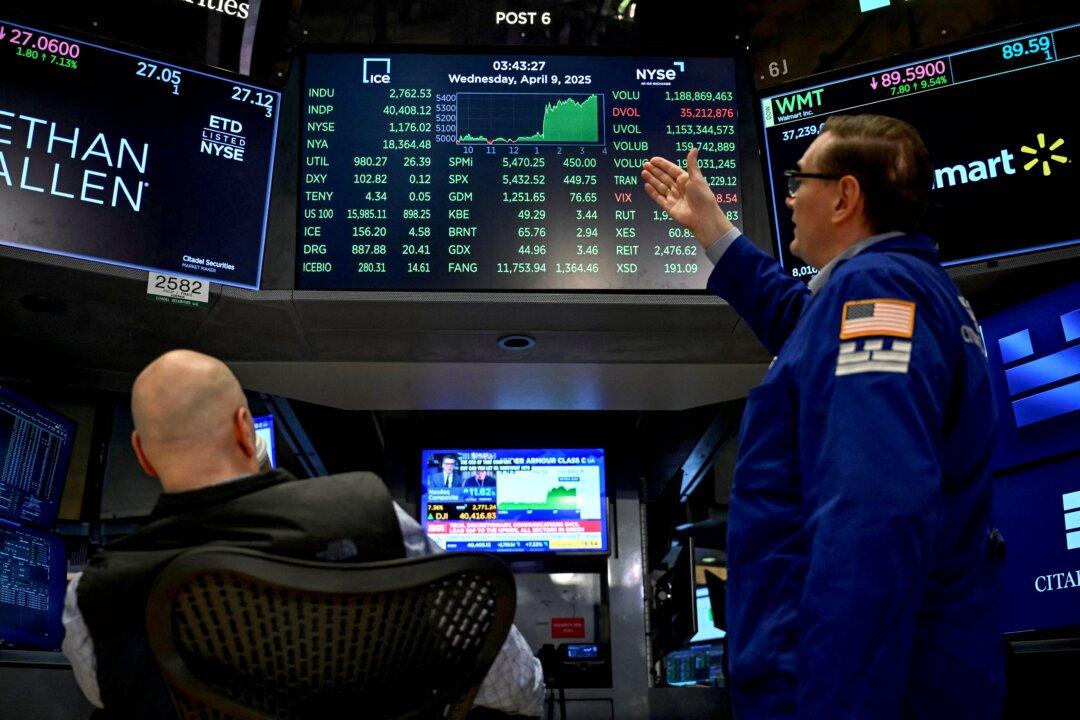In Europe, there is anxiety that former President Donald Trump may be reelected in November. European Central Bank (ECB) President Christine Lagarde shockingly broke ECB tradition to comment on politics during a France 2 interview. Specifically, she said the return of President Trump could put the United States at odds with Europe in several areas, including trade protectionism, military support for NATO, and the fight against climate change.
Ms. Lagarde doubled down in a session at the World Economic Forum in Davos, Switzerland, when she said that the best defense against a possible return of “Trump 2.0” to the White House in 2025 is to bolster Europe’s economy and unity.
Ms. Lagarde said, “The best defense, if that’s the way we want to look at it, is to attack,” adding that, “To attack properly, you need to be strong at home. So being strong means having a strong, deep market, having a real single market.”
From these public attacks on a potential U.S. presidential candidate, I think it is safe to conclude that Ms. Lagarde is infected with “Trump derangement syndrome” (TDS), but the irony of her statement is that some of the biggest European economies, like the Netherlands and Germany, are shifting right as farmers protest the green agenda and land seizures, so Europe’s green agenda is currently a bigger threat to the European Union unity than Donald Trump.
Ironically, President Joe Biden maintained President Trump’s trade barriers, so I suspect that some of Ms. Lagarde’s fears are unwarranted, especially U.S. military support for NATO, which was bolstered under President Trump, as long as Europe paid its fair share. However, Ms. Lagarde is correct about climate change, since President Trump did not embrace the Paris Climate Accord. However, she should look closer to home, as there are recent protests in Germany and the Netherlands due to their onerous green rules that are hindering GDP growth there.
Germany’s GDP contracted by 0.3 percent in the fourth quarter, so economic fears associated with the green agenda are growing in Europe. There have been several protests in Germany, which is very odd, since Germany is usually a very orderly, compliant society. However, German farmers are following the Netherlands farmers and now protesting cuts to diesel subsidiaries and agriculture vehicle tax discounts.
Berlin’s Brandenburg Gate has been blocked by tractors, where a produce farmer said, “I think it’s clear that this protest is about a lot more ... Because what’s coming out of Berlin is damaging our county—especially the economy.” German Chancellor Olaf Scholz replied: “We’ve taken the farmers’ arguments to heart and revised our proposals. A good compromise.” But despite this counter-offer by the German chancellor, Germany is clearly shifting to the right, based on recent regional elections.
As for the United States, as political strategist James Carville so famously put it, winning campaigns must focus on “the economy, stupid,” so unless President Biden can shore up his base, a new president will be elected in 2024. President Biden has apparently bought a few Super Bowl ads, but the Biden administration’s on-shoring efforts have clearly failed, since the big Arizona semiconductor plant is not scheduled to open until 2025, plus the Big Three carmakers canceled most of their battery plants with Chinese and South Korean partners.
The Institute of Supply Management (ISM) has thoroughly documented that the U.S. manufacturing sector has been in a recession for the past 14 months, but the Commerce Department on Wednesday announced that retail sales rose 0.6 percent in December, which is the strongest monthly gain in the past three months and significantly better than the economists’ consensus expectation of a 0.4 percent increase.
In addition, vehicle sales rose an impressive 1.1 percent in December. Excluding autos, retail sales rose 0.4 percent in December. For all of 2023, retail sales rose 5.6 percent and outpaced inflation, which rose at a 3.4 percent annual pace, based on the Consumer Price Index. Sales at gas stations declined 1.3 percent due to lower fuel prices. Overall, nine of the 13 industries surveyed expanded in December, so fourth-quarter GDP estimates may be revised slightly higher. I should add that after the retail sales report, the Federal Reserve Bank of Atlanta raised its fourth-quarter GDP estimate up to a 2.4 percent annual pace, up from its previous estimate of a 2.2 percent annual pace.
The stronger the economic data becomes in the upcoming months, the slower the world’s central banks will be to cut key interest rates. Over in Europe, Ms. Lagarde said at Davos that rate cuts in the summer were likely, but in her best double-speak, she cautioned that, “I have to be reserved, because we are also saying that we are data dependent, and that there is still a level of uncertainty and some indicators that are not anchored at the level where we would like to see them.”
The Commerce Department on Thursday announced that housing starts declined 4.6 percent, to a 1.46 million annual pace in December. However, building permits rose 1.9 percent, to a 1.5 million annual pace, as single-family home permits rose to the highest level since May 2022. As a result, it appears that the homebuilder industry is gearing up for a spring surge, as soon as the weather improves (and if mortgage rates decline).
The Labor Department on Thursday announced that weekly jobless claims declined to 187,000 in the latest week. That is the lowest level since September 2022. Continuing unemployment claims declined to 1.806 million in the latest week and are now at their lowest level since October. Since the unemployment data are improving, the Federal Reserve will not be under any pressure to cut key interest rates in its policy meeting in March.
The National Association of Realtors on Friday announced that existing home sales declined 6.2 percent in December, to an annual pace of 3.78 million. For all of 2023, there were 4.09 million home sales, the lowest yearly total since 1995. The inventory of existing homes for sale is now at a 3.2-month supply, a fairly narrow market, which means that median home prices will likely rise.
In December, median home prices rose to $382,600, up 4.4 percent from a year ago. The tight supply of existing homes and high median prices bode well for home builders, too, like Toll Brothers.
Finally, The Wall Street Journal reported on Thursday that a whopping $8.8 trillion remains in money market investments and certificates of deposits on the sidelines. As interest rates decline, much of this cash is expected to return to the stock market, so there is plenty of fuel to propel many stocks higher.
Naturally, stocks also have to report improving fourth-quarter results as well as positive guidance to get investors excited. I remain especially excited about our growth stocks over the upcoming months, like Super Micro Computer. Specifically, Super Micro Computer raised its quarterly sales guidance from $3.6 billion to $3.65 billion, up from its previous sales guidance of $2.7–2.9 billion. In addition, Super Micro Computer raised its quarterly operating earnings guidance to $4.90–5.05 per share, up from its previous earnings guidance of $3.75–4.24 per share.

Update on Global Wars and Other Key Indicators
In Davos last week, there was a big Ukrainian delegation, as support for funding Ukraine continues to wane after multiple reports of graft or theft of past funds. Ukraine President Volodymyr Zelenskyy surprised many at Davos by pleading for a peace plan that had been rejected by Russia. Interestingly, Mr. Zelenskyy made no direct appeal for weapons or a new military offensive. Ukraine’s “peace formula” is a clear sign that its military is exhausted and is striving to reach a ceasefire with Russia. In fact, Mr. Zelenskyy said that, “Peace in Ukraine means peace in Europe. It means peace in the world.”In the other major war zone, the United States and British attacks on the Houthi rebels in Yemen continued and apparently have only degraded the Houthi rebel missile capability by approximately 15 percent. The fact that a U.S. container ship, the Gibraltar Eagle, was hit by a cruise missile last week in the Gulf of Aden is expected to escalate the conflict. The Wall Street Journal reported that the Biden administration is now planning on putting the Houthi rebels back on its terrorist list after removing them in February 2021. The Telegraph reported last week that President Biden and Israeli Prime Minister Benjamin Netanyahu have not spoken for three weeks, so the fighting in the Middle East is essentially now every country for itself.
Iran launched a missile strike in the Kurdistan region of Iraq on what it said was the “espionage headquarters” of Israel’s Mossad intelligence service. The Financial Times reported that four people were killed and six were injured in the Iranian missile strike. Iran’s Tasnim news agency said that Iran acted “in response to the Israeli assassination of a number of commanders of the Iranian Republican Guard Corps and the resistance front.”
The Middle East is once again a tinderbox. Since the Iranian Republican Guard are in Yemen helping the Houthi rebels launch Iranian drones, Britain and the United States may kill more Iranian Republican Guard Corps with their strikes, so be prepared for further escalation in the Middle East. In the meantime, crude oil prices continue to meander higher on fears of more escalation.
Last Thursday, Pakistan conducted targeted strikes against militant hideouts in Iran that reportedly killed 20 militants. On Wednesday, Iran launched a missile against a separatist group, Jaish al-Adl, based in Pakistan’s Balochistan province. This Iranian strike killed two children and infuriated Pakistan. This response is the latest example of how the tension in the Middle East is spreading to neighboring countries.
The Wall Street Journal reported last week that China’s population declined by 2.08 million, to 1.41 billion in 2023. This is the start of a dramatic population decline that is expected to accelerate in upcoming years as China’s former “one child” policy comes back to haunt them. COVID-19 deaths in 2023 are widely perceived to have also accelerated the death rate in China last year. Although China announced that its GDP grew by 5.2 percent in 2023, its demographic challenges are expected to squelch future growth,
The big news on the climate front is that former senator John Kerry is stepping down as the climate “czar” for the Biden administration. This will put more pressure on former vice president Al Gore to keep the climate agenda in the news. At Davos, Mr. Gore is already mad at some big emerging economies (like Brazil, China, India, and Indonesia) for expanding coal for electricity in the wake of COP 28. Specifically, Mr. Gore said that, “Some of those who signed on to that pledge are now trying to claim it was optional and trying to walk it back a little bit,” and then added, “There are so many loopholes and so many tricky phrases.”
Electric vehicles (EVs) have not been getting the best press during this month’s Arctic blast that cut the range of most EVs and interfered with some of their charging stations. The EV glut at many car dealerships continues to grow, so Tesla on Wednesday announced price cuts of 4.2 percent to 9.1 percent on its Model Y in Germany. Tesla’s plant in Berlin, Germany, is closed due to supplier disruptions from the Rea Sea shipping problems, but clearly an inventory glut caused Tesla to cut prices in both China and Europe. Furthermore, Germany ended EV subsidies on Dec. 17, which caused EV sales to plunge. There is also a battery glut in China, so many EV manufacturers, led by China, are cutting EV prices.
Ford announced on Friday that it is continuing to slash production of the F-150 Lightning for the second time due to weak demand. Effective April 1, the F-150 Lightning production will be reduced to just one shift, so 1,400 employees from the second shift will be reassigned to other plants. Ford is increasing its production of Bronco and Ranger pickups, so the demand for internal combustion vehicles is strong.
The Arctic blast is also curtailing exports of liquefied natural gas, since extremely cold weather in Louisiana and Texas closed ports and reduced natural gas production. Natural gas is extremely sensitive to cold weather, so as spring arrives, natural gas prices are expected to moderate. In the meantime, record-low temperatures in Europe and the United States should keep natural gas prices high, as global cooling is great for natural gas demand!







